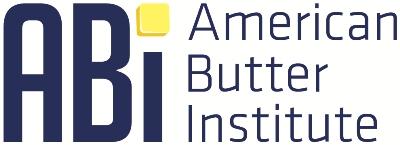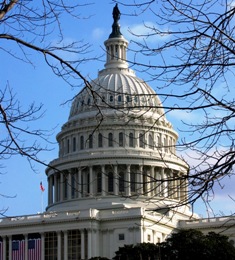As the new President and CEO of NMPF, I look forward in the coming years to continuing the use of this forum to communicate my views about the challenges – and opportunities – facing NMPF and the dairy industry. Hopefully, the timing of this, my first column, is fortunate in the sense that many of us start each New Year making lists of things we’d like to do (or stop doing), change or achieve. For my inaugural CEO’s Corner column, then, let me start with a brief list of the things we’ll being working on with NMPF’s members in the coming year.
The top item on that list is, for better or worse, a holdover from last year, and even the year before that: establishing a new and better safety net for dairy farmers. What should have been achieved by Congress in 2012, and what had a chance of getting done last year, was passage of a new farm bill containing the Dairy Security Act. NMPF and its members have been working hard with Congress since 2009 to devise and pass a new dairy program. The good news is that it appears we’re on the cusp of getting a farm bill done as 2014 begins.
Members of the House and Senate are returning to Capitol Hill this month, and finalizing the farm bill is also at the top of the list of New Year’s resolutions for them. I am cautiously optimistic that the farm bill negotiations between members of the House and Senate Agriculture committees will produce an economically and politically viable bill. It’s been bedeviled by controversies ranging from the marketing of catfish and eggs, to the level of spending on food stamps and crop insurance – but differences over these items can and will be resolved. We still need to thread the needle by ensuring that the resulting bill will pass both chambers, and be signed by the President, but I believe we’re just about there.
The second part of this resolution is just as critical: namely, ensuring that once Congress has finished its work in passing the farm bill, the resulting dairy program must be quickly and effectively implemented by USDA. New rules and regulations will have to be developed by USDA once the farm bill becomes law. Since the new margin insurance program will be the biggest change in dairy policy in many years, there’s going to be a learning curve, especially for farmers who will have to make important decisions about whether to participate in the insurance program, and at what level of coverage.
This isn’t on the scale of educational challenges resulting from, say, the Affordable Healthcare Act, but the point is still that information must be shared quickly and clearly with farmers, and we can’t rely just on the Agriculture Department to do that job. NMPF will be working hard with its members to help shoulder the load.
Another item that’s a holdover from the past, but that is also critical to the future success of the dairy industry, is immigration reform. That effort has moved in fits and starts for more than a decade. The passage of last year’s comprehensive reform bill in the Senate was a crucial and welcome step. The House needs to follow suit and pass similar legislation, in whole or in part, so that we can work with leaders in both chambers to get something done. The window for getting legislation passed in the coming year is narrow but not closed. That’s why we have to resolve to make it happen in 2014.
Yet another priority issue is maximizing the value of the pending Trans-Pacific Partnership (TPP) trade agreement to America’s dairy farmers. Negotiations of this pact will likely determine this year whether the TPP final agreement represents a net positive opportunity for the U.S. dairy sector. We need greater disciplines on non-tariff barriers, as well as greater access into Canada and Japan, in order for a TPP agreement to be useful to America’s dairy farmers. We also need reforms of New Zealand’s dairy policies as part of the deal.
The other thing I’m putting on my list is something I mentioned in my speech last November to NMPF’s members: beginning the dialogue on reforming the Federal Milk Marketing Order system. The industry will need time to adjust to a new dairy safety net in 2014, but the underlying system of determining classified prices also needs to be improved. I believe we can capitalize on the momentum behind the Dairy Security Act, and begin the work within the producer and cooperative community of solving the next, essential piece of the pricing puzzle by addressing federal order reform.
I look forward in 2014 to working on all of these issues, and more, to strengthen our industry and build a more prosperous future for America’s dairy farmers.
 The American Butter Institute (ABI), managed by NMPF, has unveiled a new logo for the association, one of the many recent changes at the 106-year-old organization.
The American Butter Institute (ABI), managed by NMPF, has unveiled a new logo for the association, one of the many recent changes at the 106-year-old organization.
 Long-time NMPF board member Bill Dropik, 75, passed away December 24th at his home in Nelson, MN. In addition to representing First District Association on the NMPF Board of Directors for eight years, Dropik was active in the Minnesota Milk Producers Association and the Dairy Leaders Roundtable. He farmed in central Minnesota for 50 years, and was still actively involved in his family dairy operation until his death. He is survived by his wife of 55 years Helen, eight children, 22 grandchildren, and 19 great-grandchildren.
Long-time NMPF board member Bill Dropik, 75, passed away December 24th at his home in Nelson, MN. In addition to representing First District Association on the NMPF Board of Directors for eight years, Dropik was active in the Minnesota Milk Producers Association and the Dairy Leaders Roundtable. He farmed in central Minnesota for 50 years, and was still actively involved in his family dairy operation until his death. He is survived by his wife of 55 years Helen, eight children, 22 grandchildren, and 19 great-grandchildren. The National Milk Producers Federation (NMPF) and the U.S. Dairy Export Council (USDEC) welcomed the introduction Thursday of the Trade Priorities Act (TPA) of 2014 by Sens. Max Baucus and Orrin Hatch, and Rep. Dave Camp. The bipartisan legislation sets forth key negotiating objectives for the Administration, and outlines engagement requirements providing for an enhanced role for Congress in trade negotiation consultations.
The National Milk Producers Federation (NMPF) and the U.S. Dairy Export Council (USDEC) welcomed the introduction Thursday of the Trade Priorities Act (TPA) of 2014 by Sens. Max Baucus and Orrin Hatch, and Rep. Dave Camp. The bipartisan legislation sets forth key negotiating objectives for the Administration, and outlines engagement requirements providing for an enhanced role for Congress in trade negotiation consultations.
 The leaders of the House and Senate Agriculture committees continue to negotiate this week on a number of issues to break the impasse over the long-pending farm bill. Those differences include the final shape of an updated federal dairy program, but also range from the level of food stamp cuts, to conflicts between row crop producers in various parts of the country.
The leaders of the House and Senate Agriculture committees continue to negotiate this week on a number of issues to break the impasse over the long-pending farm bill. Those differences include the final shape of an updated federal dairy program, but also range from the level of food stamp cuts, to conflicts between row crop producers in various parts of the country. 



